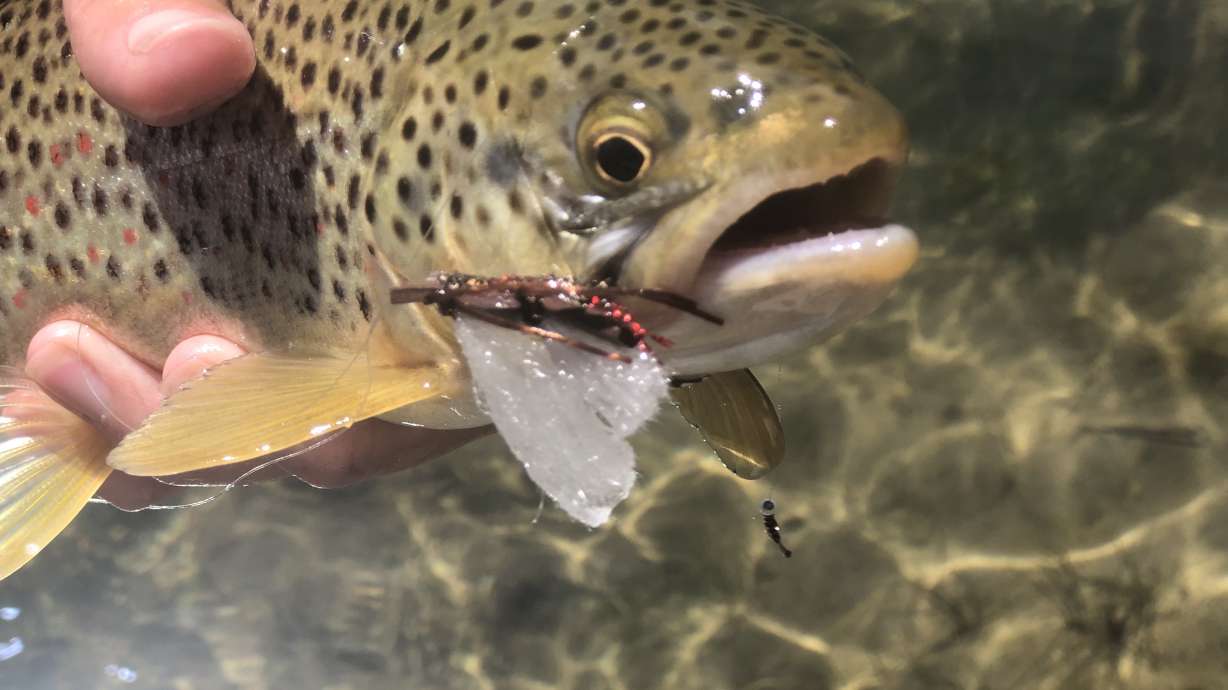Estimated read time: 3-4 minutes
This archived news story is available only for your personal, non-commercial use. Information in the story may be outdated or superseded by additional information. Reading or replaying the story in its archived form does not constitute a republication of the story.
VERNAL — A disease that attacks the cartilage tissue of a fish's head and spine that can be fatal for fish was recently detected in fish at a creek near a national fish hatchery in northeast Utah, state wildlife officials said Friday.
Whirling disease was detected in fish at Jones Hole Creek, which is adjacent to the Jones Hole National Fish Hatchery located in Uintah County near Dinosaur National Monument and about 40 miles northeast of Vernal. Wildlife officials said fish at the hatchery itself has so far tested negative for it.
The disease was first discovered in Utah 30 years ago. It's caused by a microscopic parasite that attacks the infected fish, according to biologists with the Utah Division of Wildlife Resources. They added that the disease is most commonly found in salmon or trout species and can lead to neurological damage, skeletal deformities and even death.
The agency states the disease does not affect humans and is "not a risk for human health" but is something that impacts fish, which is what prompted their warning.
It's a disease that's been found in several areas across the state since in 1991. Biologists began testing for whirling disease in the Jones Hole Creek area in 2017 and the U.S. Fish and Wildlife Service first found the disease in rainbow trout samples collected two months ago, DWR officials said Friday.
Travis Anderson, acting manager for the Jones Creek hatchery said in a statement that the fish in the facility likely weren't impact because the water from the adjacent facility doesn't come from the Jones Hole Creek.
"The water for the hatchery is piped underground from nearby springs, located just east of the creek on hatchery grounds," he said. "When we were first notified of the positive whirling disease sample results, we installed a temporary fish barrier at the downstream end of our flood bypass channel. This should help prevent potential whirling disease-positive fish from moving upstream into the bypass channel and Diamond Gulch pond, which are immediately adjacent to the hatchery."
Brown trout samples taken from the creek also tested negative.
The state wildlife division said anglers can help prevent the spread of whirling disease. They asked anglers heading out to fish at Jones Hole Creek to not fish in areas above the "fishing closure signs" that are adjacent to the hatchery. Fish were removed from the location.

In addition, they asked anglers to not use felt-soled wading boots because the boots could pick up the parasite and transport it to other waterbodies, which could spread the disease to fish in other waterbodies.
They also asked anglers to rinse all the mud and aquatic plants from their boots, waders or other equipment after they have fished in the area.
"Let all the equipment dry in the sun for a few days before using them again," DWR officials wrote. "Do not enter any other waterbody until you have thoroughly cleaned all your fishing equipment."
Finally, they ask anglers to not transport any fish, fish parts or water from Jones Hole Creek to any other waters — whether the fish is dead or alive because it could contain spores that could ultimately spread the disease to fish in other waterbodies.










